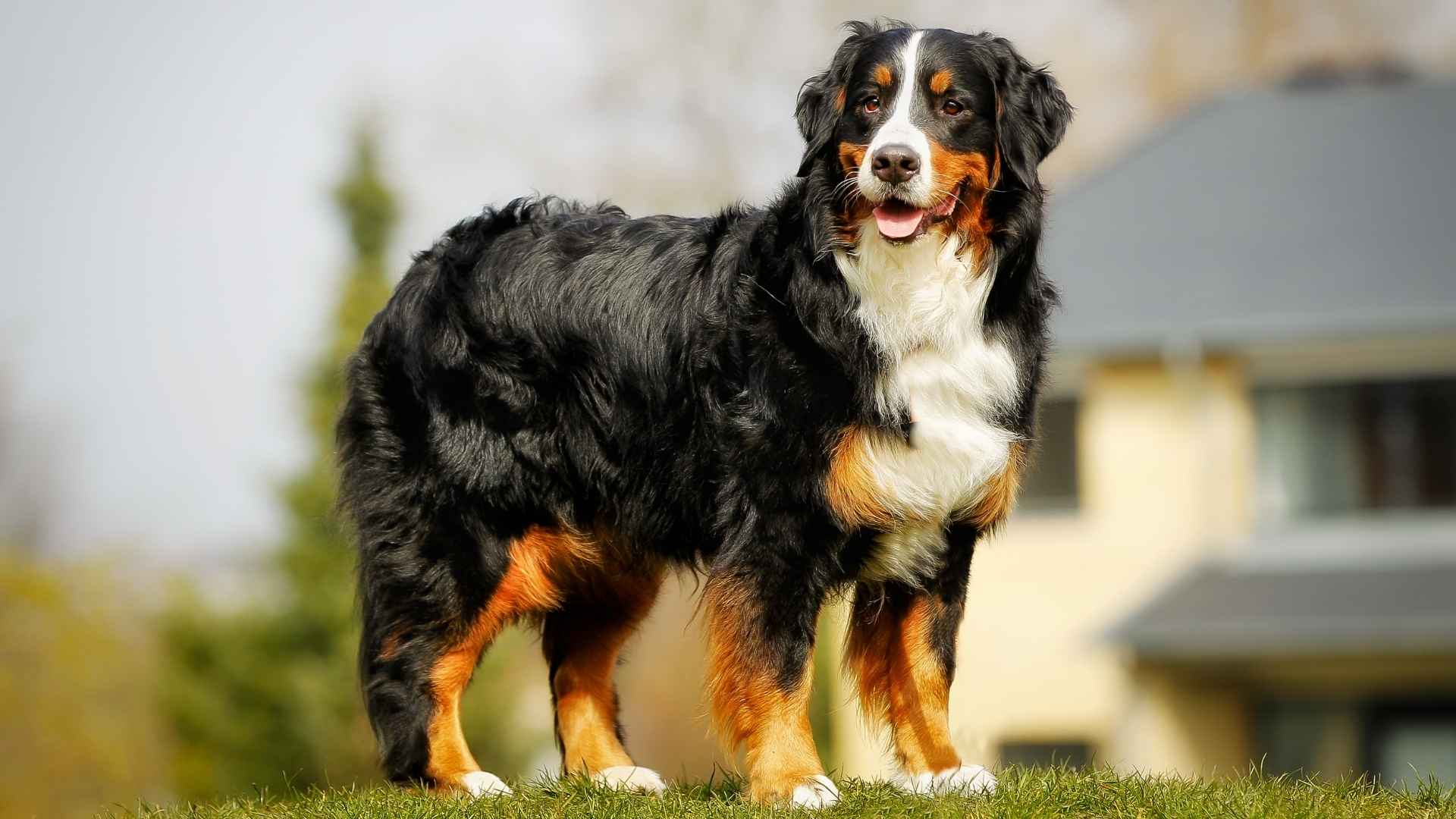Not all fluff comes in pocket-sized packages! Some of the fluffiest, cuddliest, and most majestic dogs out there are also massive. We’re talking about the double-coated big dog breeds—those gentle giants with fur for days and hearts of gold.
These pups rock not one but two fabulous layers of fur: a soft undercoat and a longer outer coat (also known as guard hairs). It’s nature’s built-in weatherproofing system—keeping them warm in the winter, cool in the summer, and even a little dirt-repellent.
Double-coated dogs weren’t just made to look cute (although the mission was definitely accomplished). Many were bred to brave harsh weather and work in water or snow—think fluffy superheroes with tails! So, if you’ve ever dreamed of snuggling a living teddy bear that also happens to drool and love belly rubs, you’re in for a treat. Let’s meet the big, beautiful fluffballs that rule the double-coat kingdom!
Double Coated Big Dog Breeds
1. Newfoundland
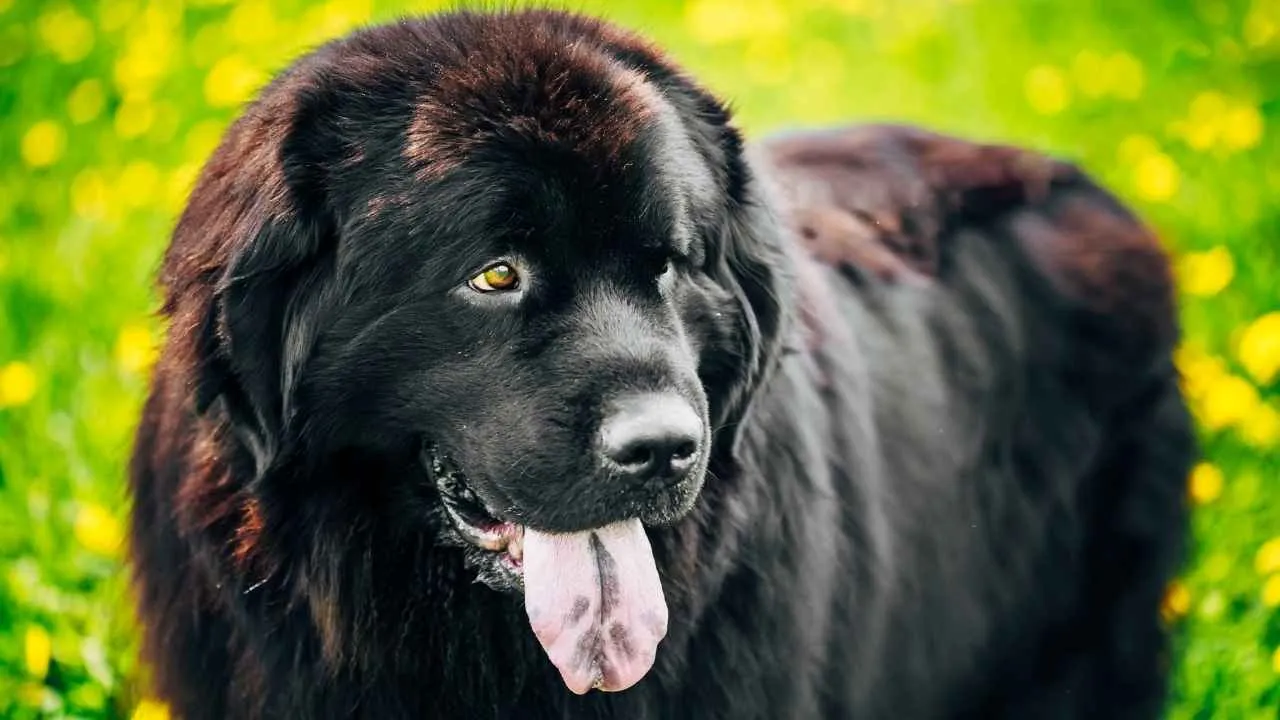
Newfoundland dogs—or “Newfies”—are the gentle giants of the canine world. Bred in cold, rugged Newfoundland, Canada, they were fishermen’s loyal helpers, known for hauling nets and navigating icy waters. With webbed feet, a love for swimming, and males reaching up to 150 pounds, Newfies are true water-loving workhorses.
Their thick double coat isn’t just for show—it’s built to provide insulation and water resistance. The coarse outer layer repels moisture, while the dense woolly undercoat keeps them warm. However, this beautiful coat does shed moderately year-round and heavily in spring and fall, so weekly brushing (daily during shedding) is essential. Don’t shave them—their coat regulates temperature and prevents sunburn.
Newfies come in black, brown, gray, or the striking black-and-white “Landseer” pattern, often with white markings on the chest, chin, or toes. With soulful dark eyes, a teddy bear face, and a powerful yet huggable frame, these lovable giants are as charming as they are majestic.
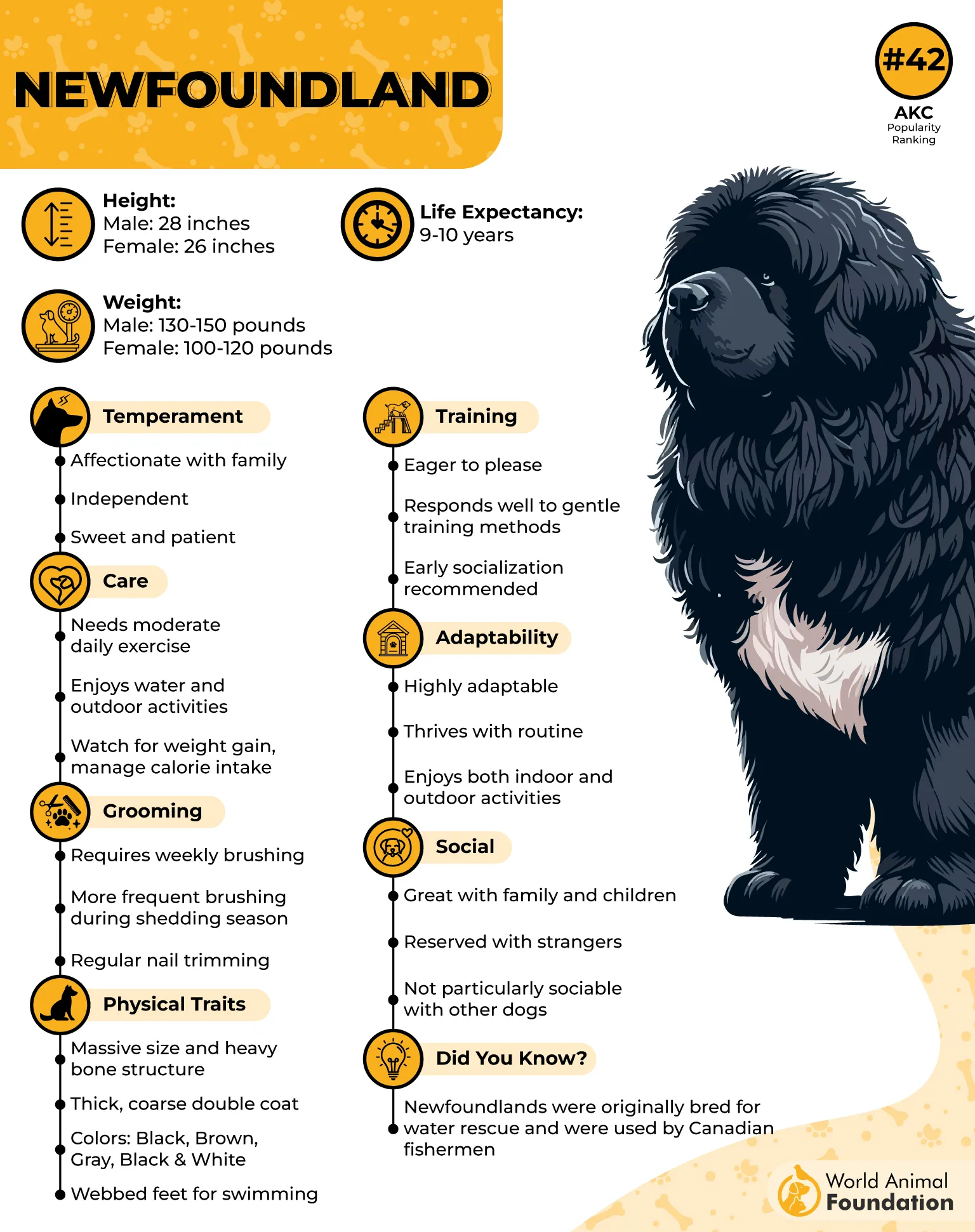
They’re sweet-tempered, loyal, and great with kids, other pets, and pretty much anyone willing to give belly rubs. They do bark to alert you when strangers are near, but once they know a friend is welcome, they’re all tail wags and trust.
While they aren’t high-energy maniacs, Newfies do need regular walks and mental stimulation. After that? They’re ready to crash next to you on the couch like the oversized, fuzzy nap buddies they were born to be. Loyal, trainable, and loving to the core—these dogs are gentle souls wrapped in a whole lot of fluff.
Fun Fact:
As noted by WebMD, Newfies are famous for their gentle, nurturing nature, so much so that they’re often nicknamed “nanny dogs.”
2. Akita
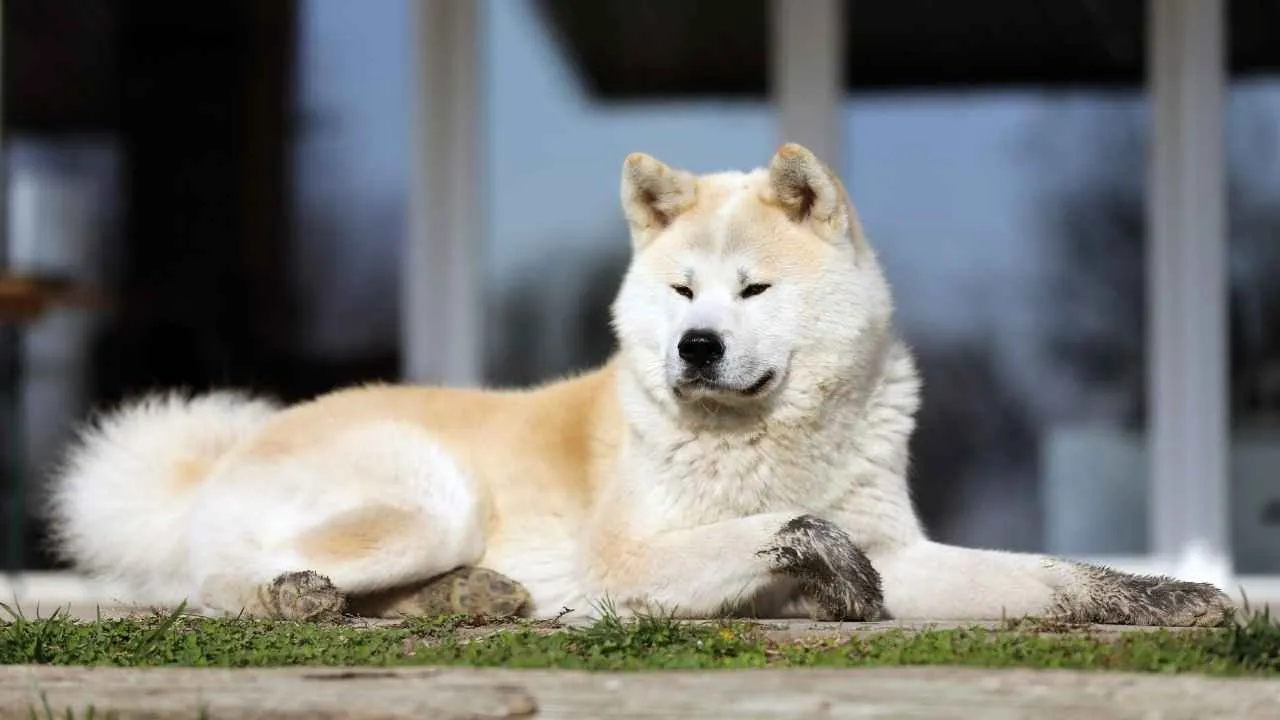
With roots in the snowy mountains of Japan, the Akita is a powerhouse wrapped in plush. These large, burly pups sport a thick double coat—think dense, soft undercoat with a short, weather-resistant top layer. It’s cozy, stylish, and, yes, it sheds. Hard. A few times a year, Akitas “blow” their coat like furry blizzards—don’t be surprised if it comes out in clumps! The rest of the time? A good brushing few times a week will do just fine.
Akitas are no lap dogs. These spitz-type giants tip the scales at 70 to 130 pounds and stand up to 28 inches tall. With broad heads, curled tails, and upright ears, they carry quiet confidence—and a look that says, “I’m watching you, human… lovingly.”
Thanks to that luxurious coat, Akitas are best suited for cooler climates. They shed year-round, with epic coat-blowing in spring and fall, so daily brushing during those times is your best friend. Avoid hot weather when possible and keep grooming consistent to prevent mats.
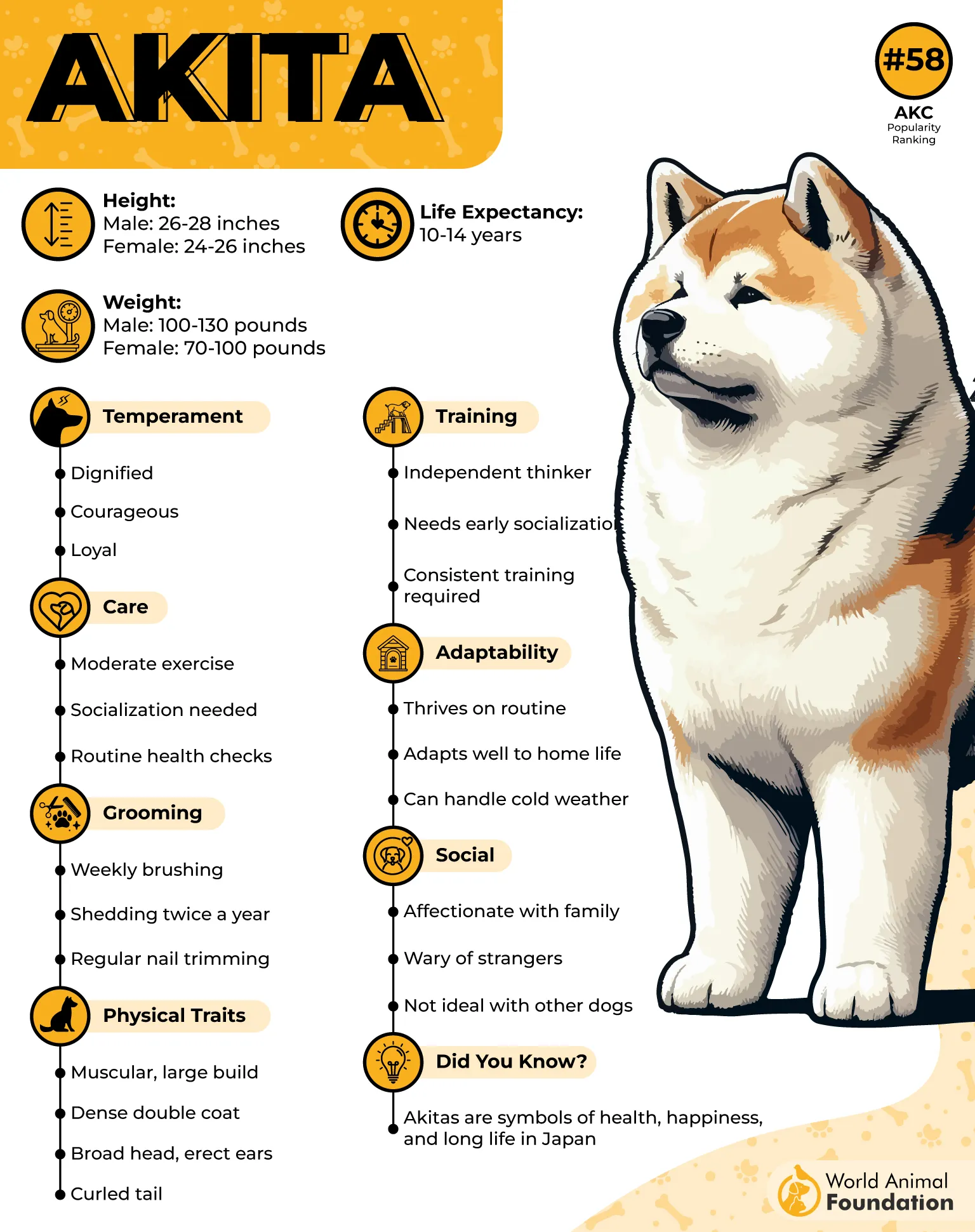
Akitas are famously loyal to their inner circle. They’re calm, collected, and not the most playful of pups—unless it’s family time, then prepare for goofiness. While they’re not yappy barkers, they are natural guardians for their families. Suspicious of strangers and not always dog-friendly, early socialization is a must.
These noble pups are best for experienced dog parents who can provide firm, kind training and a structured environment. They’re not ideal for households with small kids or other dominant dogs, but for the right family, an Akita is a calm, loyal companion with a heart as big as their bear-like paws.
Fun Fact:
In Japan, Akitas were once reserved for royalty—yep, only the Imperial family and aristocracy could own them. They even had fancy leashes to show off their status! Today, while no royal title is needed, caring for one still requires dedication, especially with an independent spirit and strong will.
3. Bernese Mountain Dog
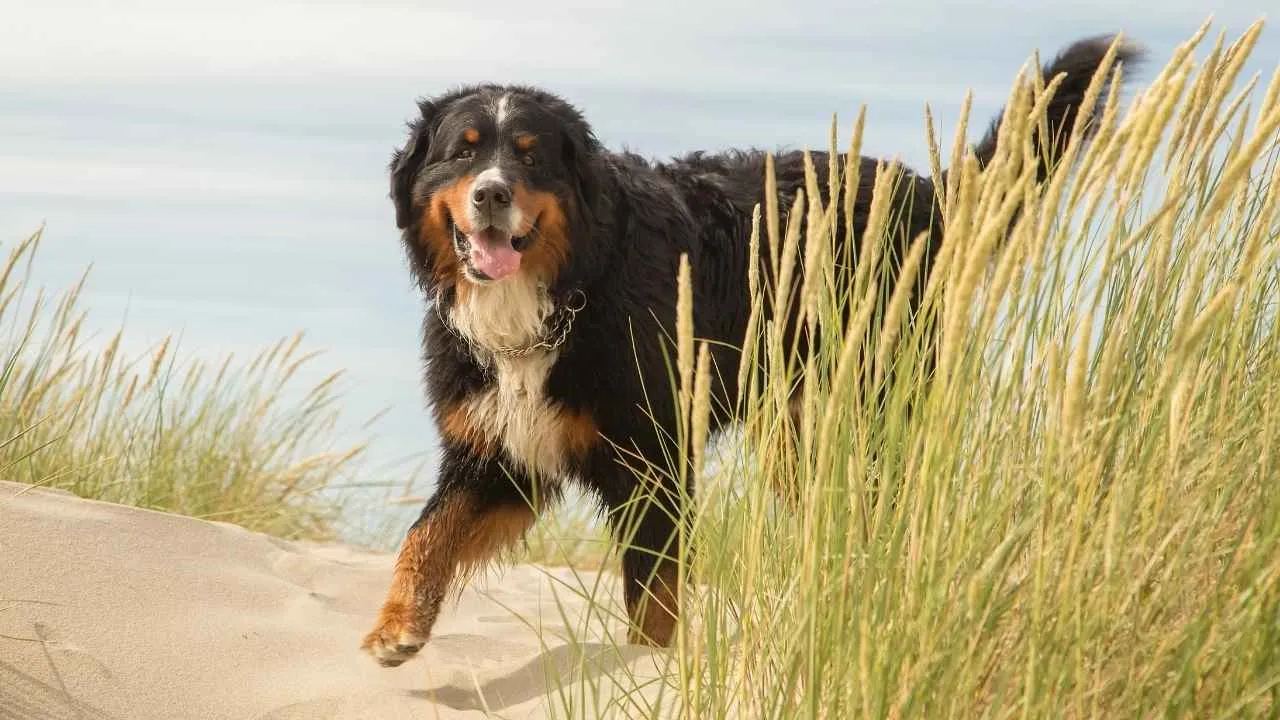
With a heart as big as their paws, Bernese Mountain Dogs (or “Berners” if you’re on a nickname basis) are the epitome of brawn-meets-buttercup. Originally bred in the snowy pastures of Switzerland, these big beauties were built for work—but don’t be fooled, they’re total softies at heart. Whether it’s pulling carts or pulling at your heartstrings, they do it all with grace.
One look, and you’ll be smitten. Berners flaunt a thick double coat with a silky, longer outer layer and a woolly undercoat that’s perfect for chilly climates. Their signature tricolor pattern—jet black, rust, and white—is downright regal. But with great fluff comes great responsibility: weekly brushing is a must, and daily during shedding season (which, spoiler alert, happens twice a year). Grab a slicker brush and get comfy—it’s a bonding moment!
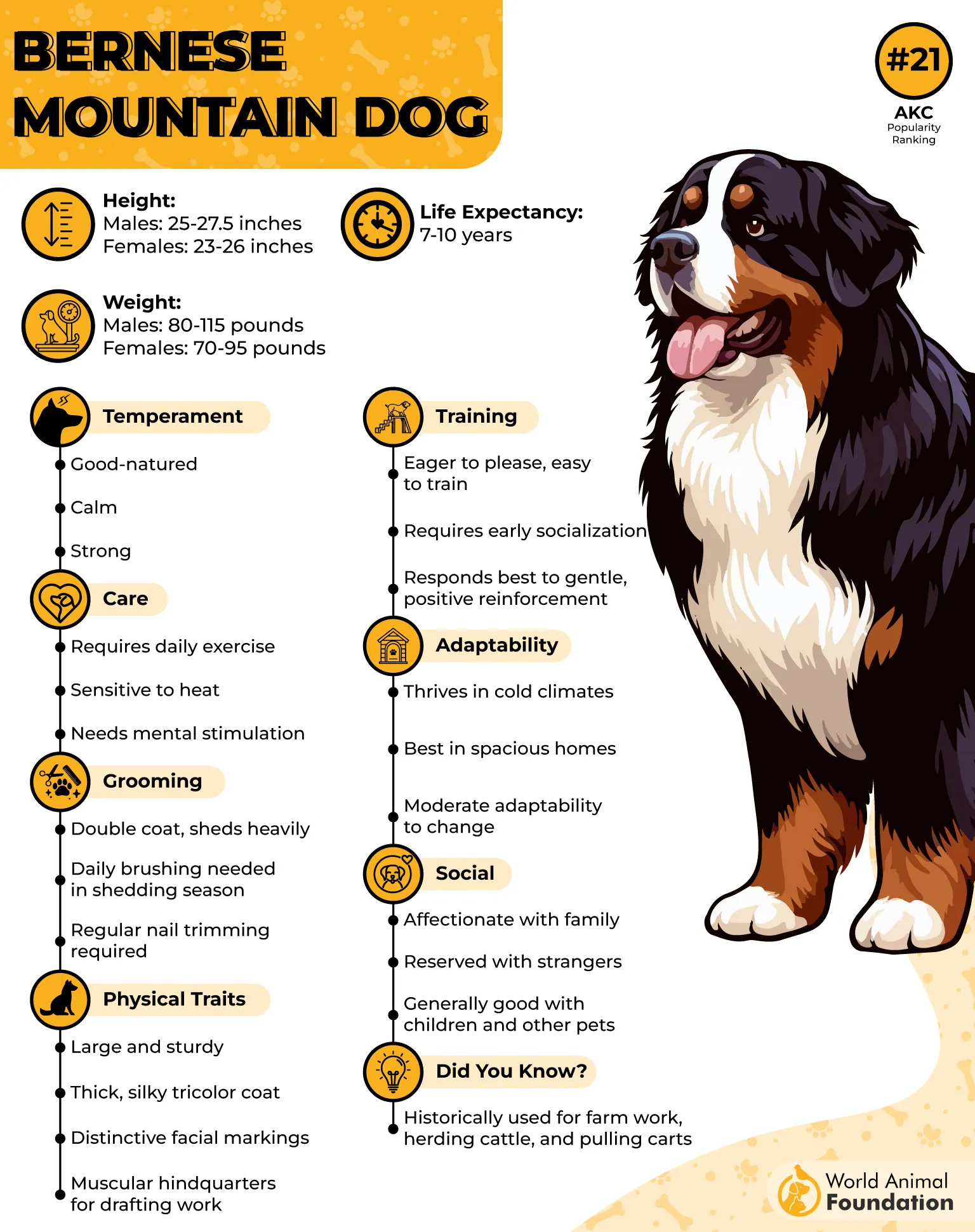
Standing up to 27.5 inches tall and weighing as much as 115 pounds, Berners are impressively sized, but don’t let their bulk fool you. These dogs are famously calm and gentle. They’re not the rowdy type, but they love a good romp and thrive on human connection—especially with their person (yep, they usually pick a favorite).
Berners are brainy pups who live to please. Training them is usually a breeze, as long as you’re gentle. These big sweethearts have sensitive souls and don’t respond well to harsh corrections. Positive reinforcement and early socialization help them grow into well-mannered, confident companions.
Kid-Approved and Family-Focused
Known for being incredibly patient and affectionate, Berners are famously great with children. They often take on the role of fuzzy guardians, always close by but never too rough. Just remember, their size can be a bit much for toddlers, so supervised play is best.
4. Leonberger
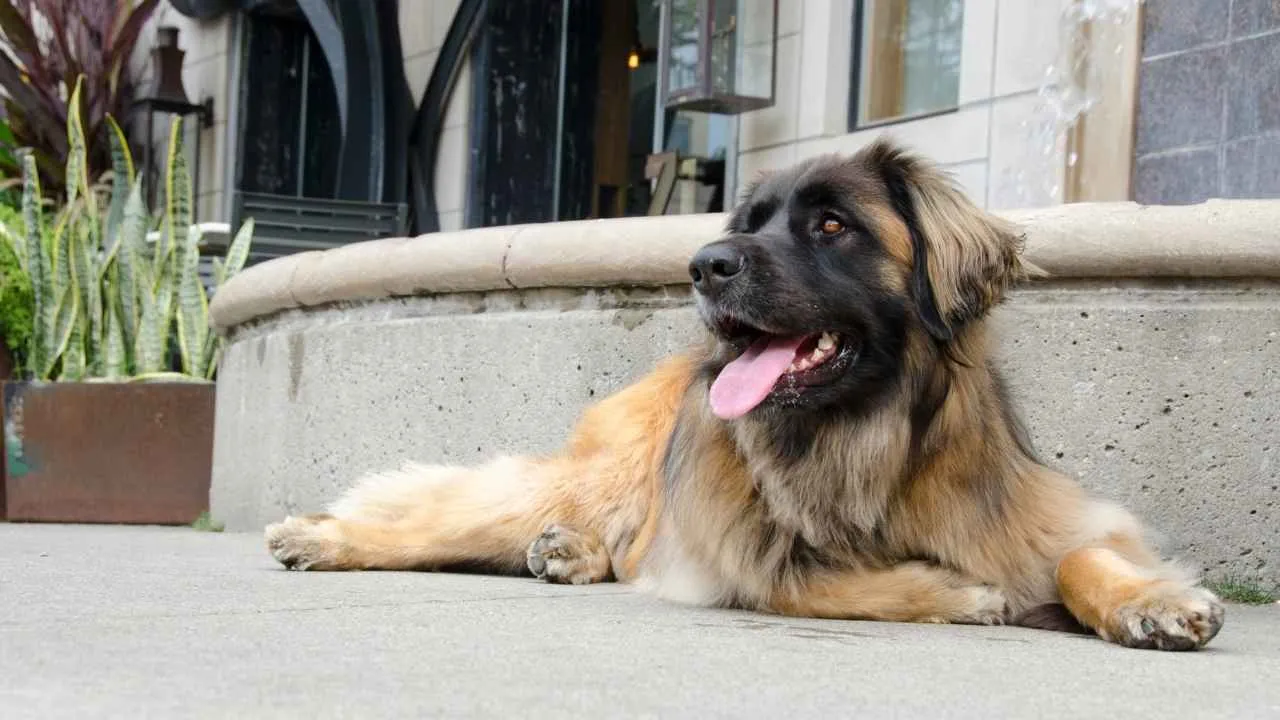
With a name straight out of a fairytale, the Leonberger hails from the charming town of Leonberg, Germany—and yes, legend has it this majestic dog was bred to resemble a lion. Think Newfoundlands, Saint Bernards, and Great Pyrenees all rolled into one giant, fluffy masterpiece.
European royalty adored them, farmers relied on them, and today, Leos are just as likely to be sniffing out survivors in search-and-rescue missions as they are snoozing at your feet.
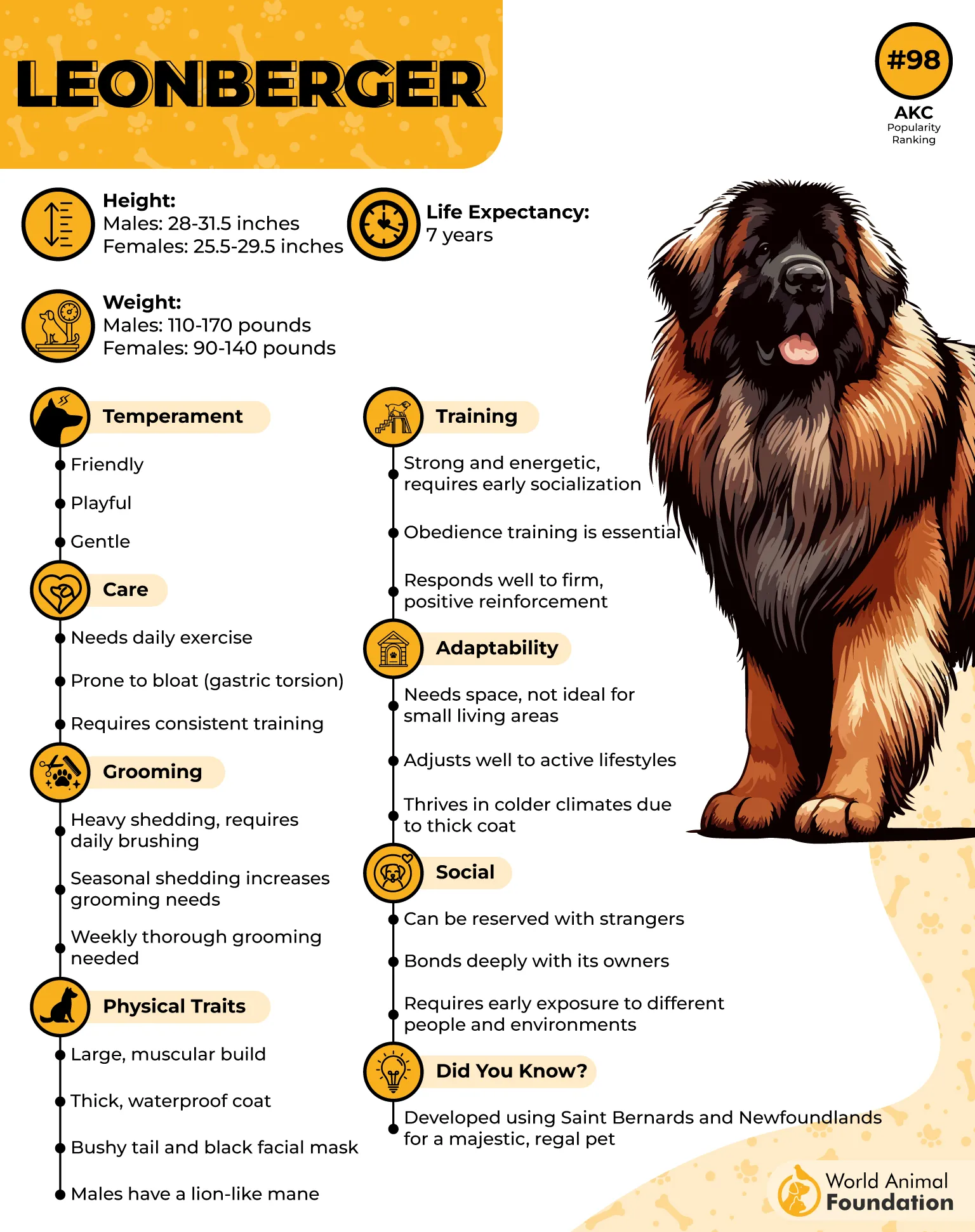
Leonbergers are massive. We’re talking 25–32 inches tall and tipping the scales at up to 170 pounds. But don’t let the size fool you—these gentle giants are famously affectionate, calm, and deeply loyal. They’re especially loving with kids and thrive when surrounded by their people.
That glorious coat? It’s not just for show. Leos sport a medium-long, water-resistant double coat that’s built for cold weather and serious grooming sessions.
Regular brushing is essential, especially behind those fluffy ears and along the legs where mats love to form. Twice a year, prepare for a hair storm as they “blow” their coat. You’ll need a rake, a pin brush, a slicker, and maybe a vacuum on standby. Also, don’t forget to trim those nails every couple of weeks!
Brains, Beauty, and a Bit of Drama
These dogs aren’t just good looks and fluff—they’re incredibly smart and eager to please. Leonbergers respond well to training and enjoy having a purpose, even if it’s just carrying their own leash or “supervising” chores. They’re calm watchdogs who won’t bark without reason, but they’re always alert and aware.
5. Saint Bernard
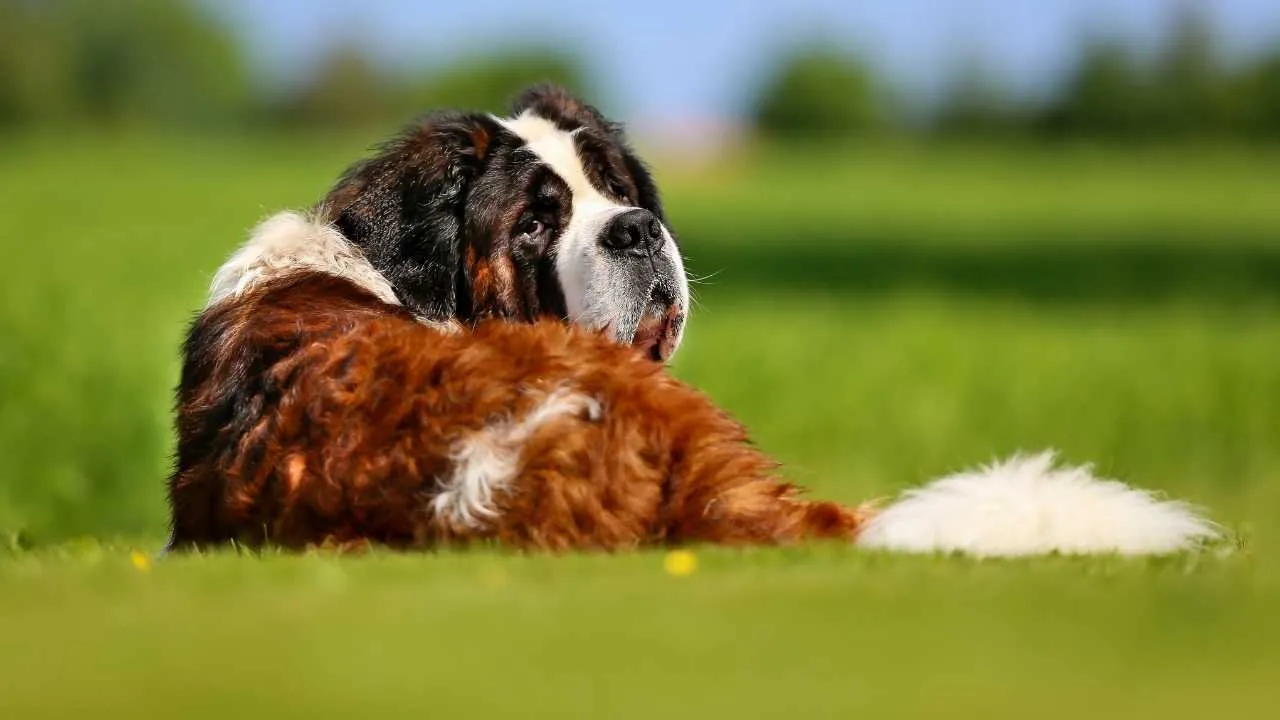
If a big dog with an even bigger heart sounds like your dream companion, let us introduce you to St. Bernard—a Swiss-born gentle giant famous for saving lost travelers in the Alps and stealing hearts at home. These dogs are sweet, soulful, and surprisingly sensitive, making them wonderful family members and patient companions, especially around kids.
Saint Bernards are colossal in both size and charm. Males can reach 30 inches tall and weigh up to 180 pounds—basically, a dog the size of a small sofa. Females are a touch smaller but still plenty impressive.
With their wrinkled brows, expressive brown eyes, and adorably floppy ears, they have a look that’s both noble and endearing. Their massive heads and boxy muzzles are iconic—and let’s not forget those famously drooly jowls.
With thick, dense double coats (either short or long-haired), St. Bernards are winter-weather pros. Their coloring usually includes white paired with shades of red, brown, or black, and while they look stunning in the snow, heat is their arch-nemesis. These dogs thrive in chilly climates, and in warmer ones, they’ll need air conditioning, shady spots, and plenty of water to stay comfy.
Saints are mellow, slow-paced pups that prefer couch snuggles to cardio. They’re easygoing and affectionate, picking up on your moods and offering a comforting presence. While they’ll say hello to strangers with a polite wag, they’re not watchdog material, though their sheer size and deep bark usually do the trick.
Fun Fact: Embrace the Drool
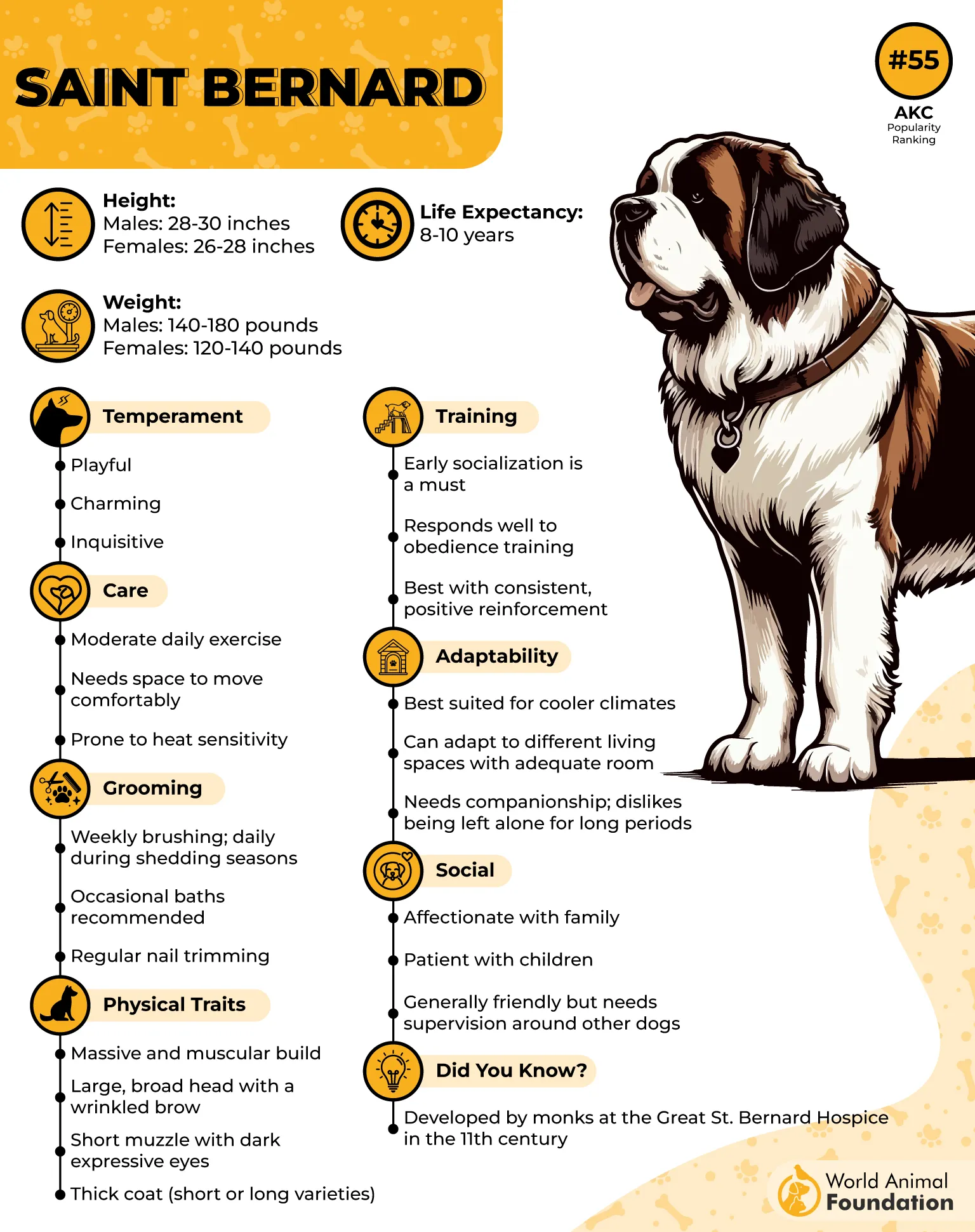
If you’re a neat freak, this might not be your breed. Saints are world-class droolers—walls, clothes, and even ceilings aren’t always safe! Their drooling kicks into overdrive in the heat, which is another reason they’re snow lovers through and through. Keep a drool towel handy, invest in a good mop, and you’ll be golden.
6. Great Pyrenees
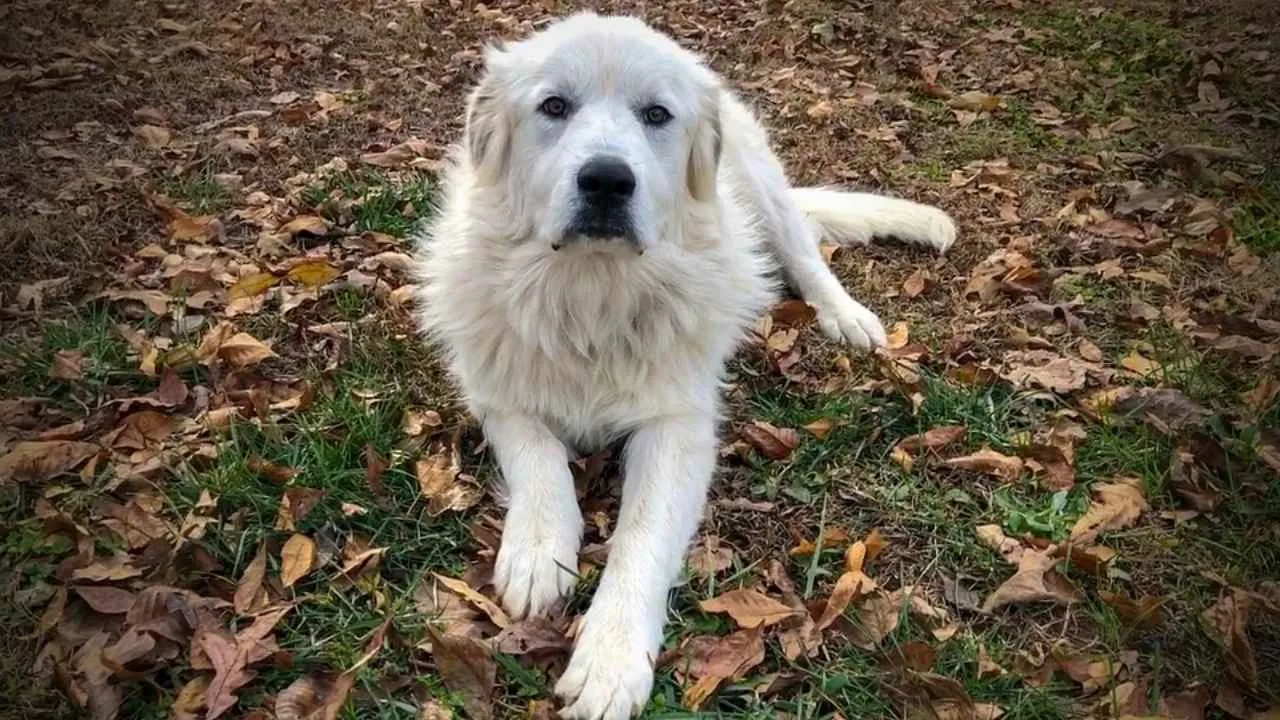
Imagine a dog that looks like it stepped out of a snow globe—majestic, snow-white, and absolutely regal. That’s the Great Pyrenees! Originally bred to guard livestock in the chilly Pyrenees Mountains between France and Spain, these giant fluffballs are equal parts protector and gentle soul. With males reaching up to 32 inches tall and weighing over 100 pounds, they’re impossible to miss—and hard not to love.
Don’t let their size fool you—Pyrs are zen masters. These gentle giants are usually calm, dignified, and observant. But when they sense a threat? Boom—they move with surprising grace and speed.
Naturally alert and independent, the Pyr prefers to assess situations on their own terms (yep, obedience training might be met with a raised fluffy eyebrow). Early socialization and positive reinforcement go a long way in raising a well-mannered mountain guardian.
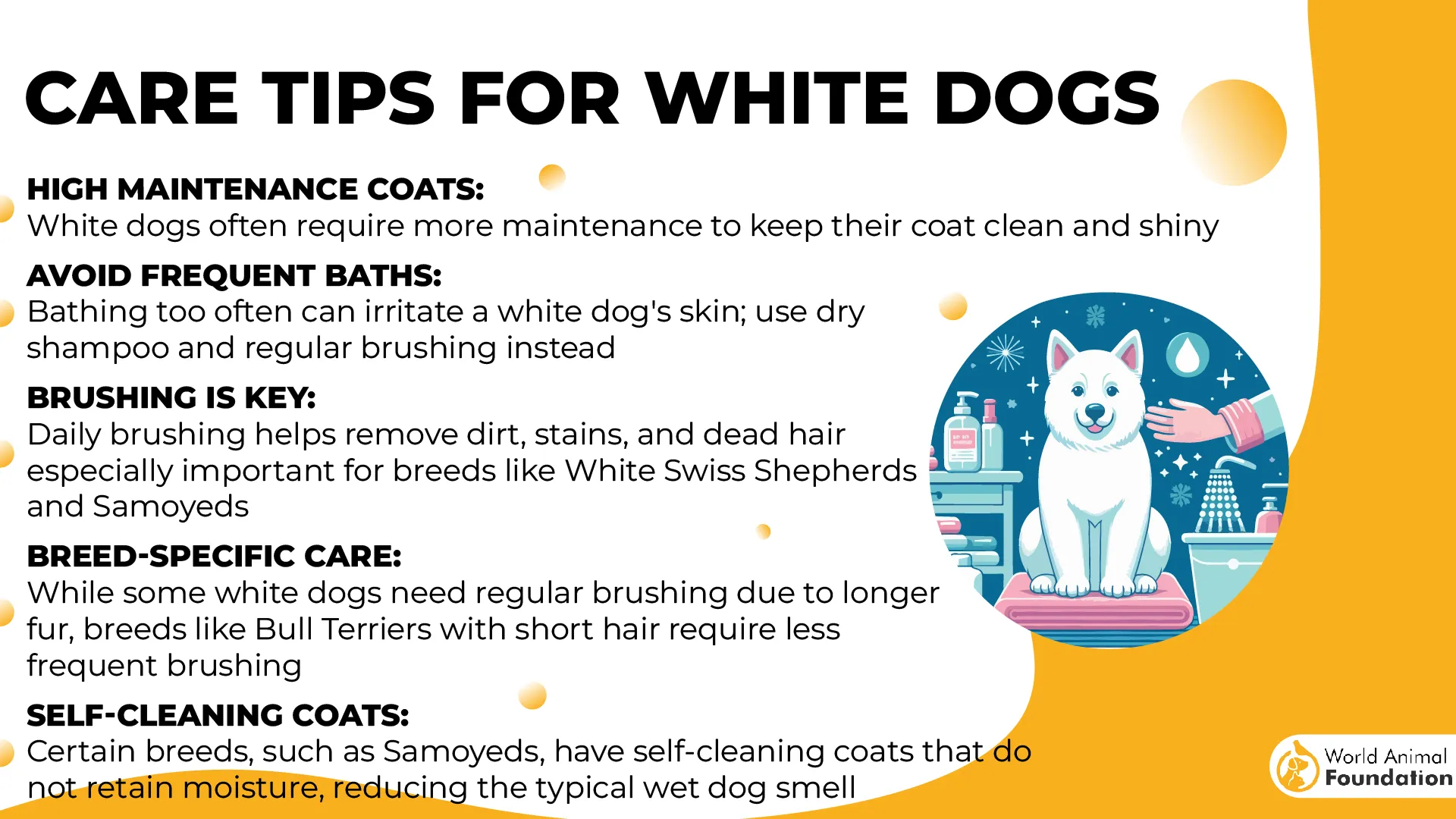
As noted by PetMD, these pups rock a thick double coat—a soft undercoat and a long, weatherproof top coat—that’s perfect for cold temperatures and gives them their iconic poofy look. Most Pyrs are all white, but you might spot markings in gray, tan, reddish-brown, or even “badger” (which fades as they age).
For a dog with so much fur, the Great Pyrenees is surprisingly low-maintenance, most of the time. Their coats are dirt-resistant and don’t mat easily, but when they do shed, it’s an avalanche. You’ll want to brush them weekly (daily during shedding season, aka “forever,” according to Pyr parents). Add nail trims and dental care, and you’re golden. Or, more accurately, white.
The Great Pyrenees is a natural-born guardian, and that job never really ends—even in your backyard. They’re incredibly perceptive and can pick up on your mood (and your cat’s attitude) from across the room.
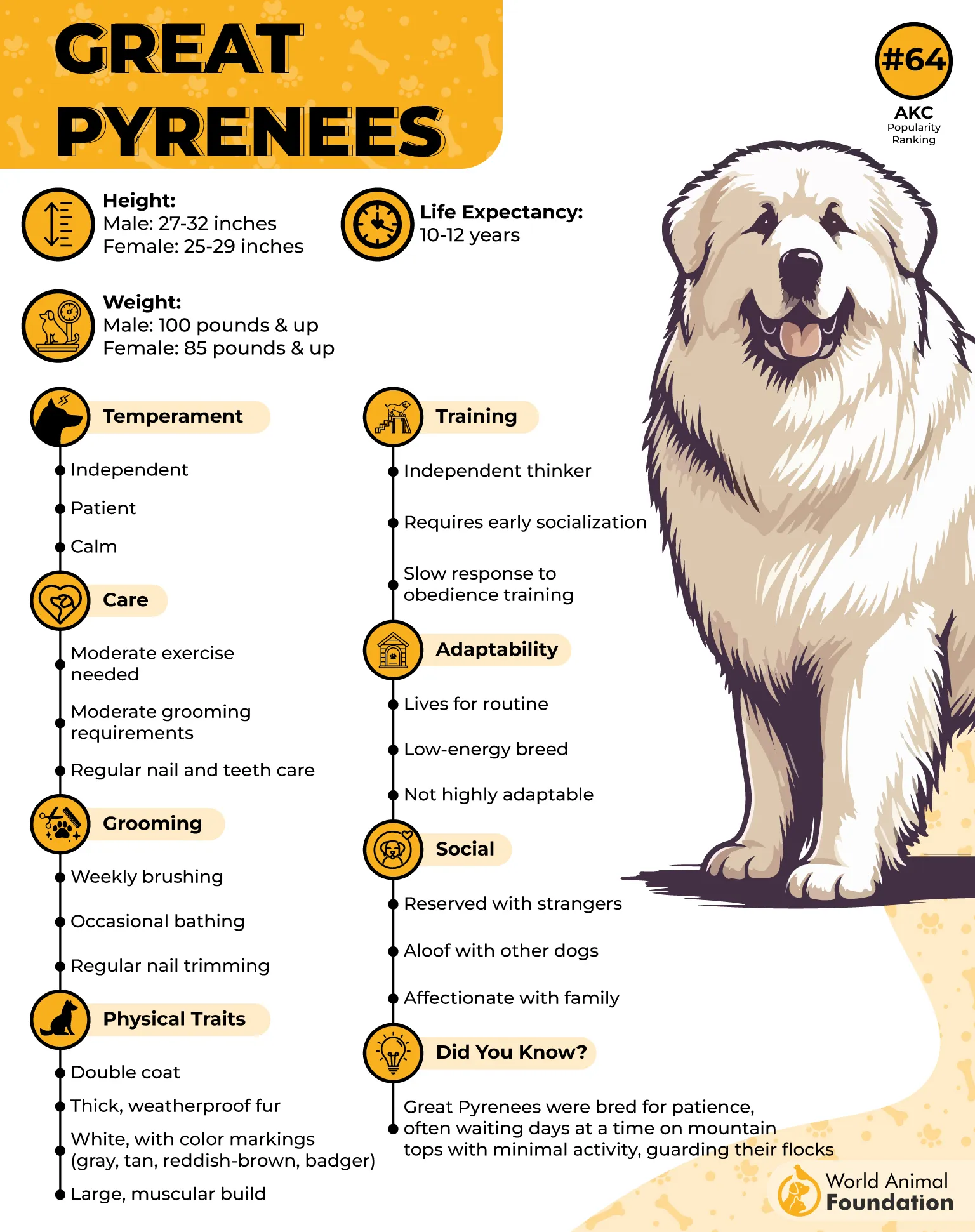
They tend to be nocturnal, too, thanks to their ancestral job of guarding sheep through the night. So don’t be surprised if your Pyr patrols the house at 2 a.m. or lets out a bark just to let burglars know who’s boss.
Fun Fact: Digging for Cool
On hot days, you might catch your Pyr digging a little personal chill zone in the yard. That’s not mischief—it’s survival instinct! These dogs are built for snow, and summer heat can be tough on them. Always provide shade, fresh water, and maybe even an air-conditioned room to lounge in like the royalty they are.
7. Greater Swiss Mountain Dog
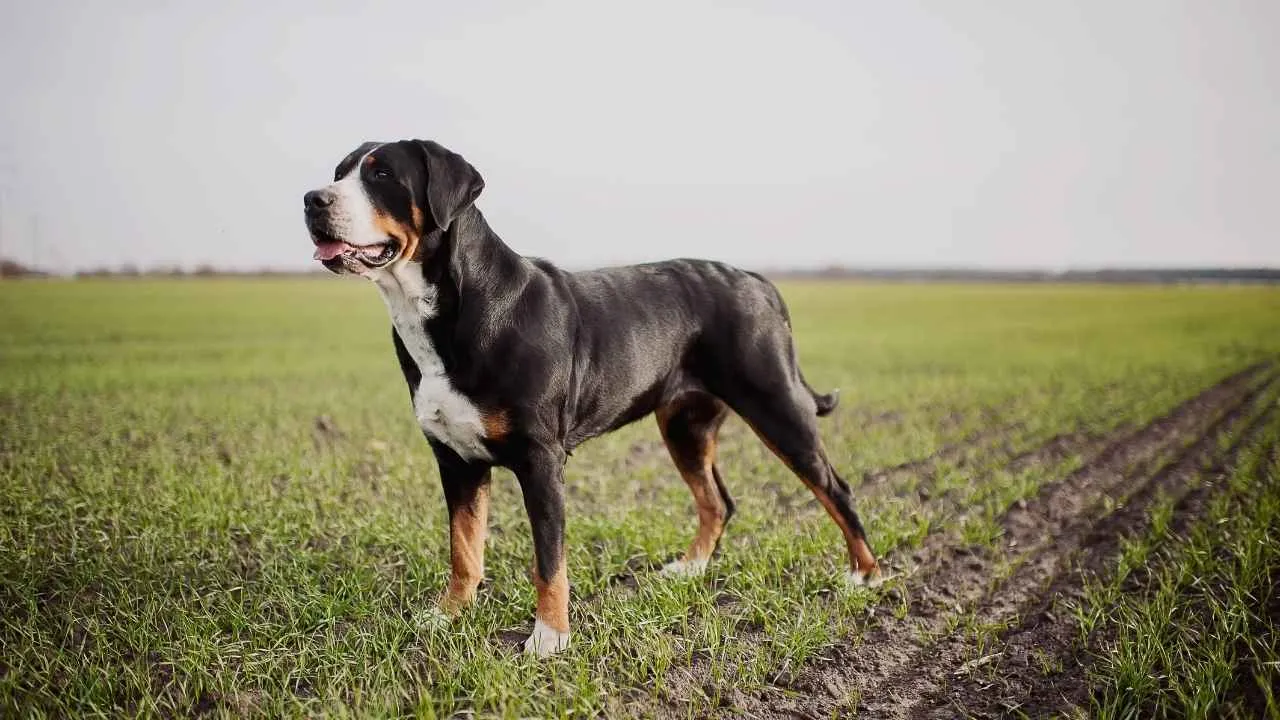
Say hello to the Greater Swiss Mountain Dog, or as fans affectionately call them, the “Swissy.” Originally prized by 19th-century Swiss farmers for their legendary strength, these big-hearted draft dogs are now rare gems—but still win hearts with their charm, loyalty, and outgoing personality. They’re built like tanks yet as sweet as a scoop of Swiss chocolate.
Talk about striking—Swissies sport a bold tri-color coat of black, white, and rust, with a signature white blaze on their face that highlights their sweet expression. Their short double coat is “wash and wear,” which means minimal grooming most of the year. But twice a year, the thick undercoat explodes (hello, tumble-fur!). That’s your cue for bathing, blow-out, and some serious brushing.
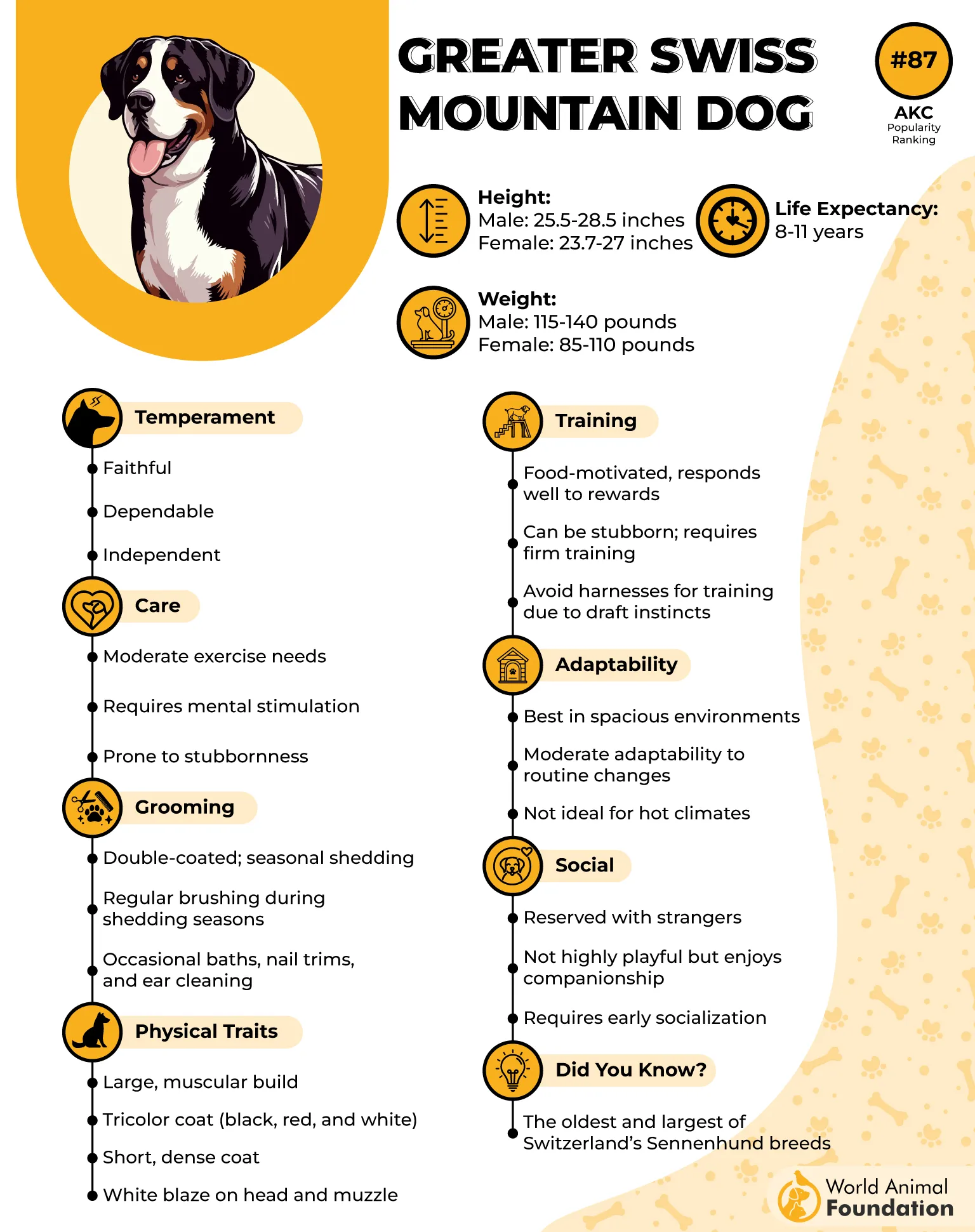
Swissies are massive—males can reach 28.5 inches tall and tip the scales at 140 pounds, while females come in slightly smaller. But don’t let the size intimidate you. The American Kennel Club (AKC) states that their temperament is famously jovial and gentle, especially around kids. Just don’t forget the golden rule: always supervise dog-and-child playtime, no matter how cuddly the pup may be.
This breed was literally born to haul. They’ve been known to pull carts weighing up to 3,000 pounds—no sweat! That hardworking spirit hasn’t faded, so they thrive in active homes with room to roam, jobs to do, or games to play.
But once their energy’s spent, they’re champions of couch cuddles and power naps. Think: marathoners who never miss a nap.
Barking With Purpose
Swissies have a bark that echoes through the Alps (and your living room). They’re natural watchdogs—alert but not aggressive. With proper socialization, they warm up to strangers and fit seamlessly into busy households. Just keep an eye on their inner herder: they may try to chase smaller pets if not taught otherwise.
Training the Swiss Way
These big goofballs are total foodies and love to please—especially if treats are on the line! But don’t be fooled; they’ve got a stubborn side too. Patience and consistency are a must. Fun fact: ditch the harness unless it’s cart-pulling time—otherwise, you might unleash their inner sled dog! Start training and socializing early, and you’ll have a well-behaved mountain buddy for life.
Conclusion
Double-coated dog breeds, like Golden Retrievers, Siberian Huskies, Australian Shepherds, and Alaskan Malamutes, require special care due to their unique two-layered coat. Their thick, dense undercoat and harsh topcoat work together to protect them from the elements and regulate body temperature.
Regular grooming is essential to remove loose fur and dead hair, especially as the seasons change. While shedding is normal, it’s important to never shave double-coated dogs, as it can damage their skin and prevent their coat from protecting them from UV rays and harsh weather.
Be sure to address feathering areas and brush their medium-length or long coats regularly to prevent them from becoming severely matted. If you’re unsure how to manage their coat, seeking a professional groomer is a great option to keep your dog comfortable and looking their best.


